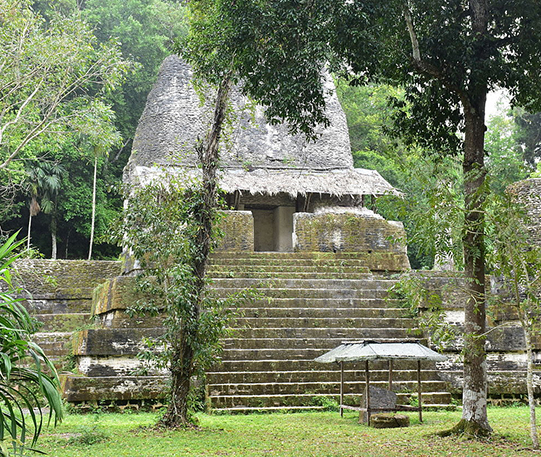
By Jim Brace-Thompson
Zeolites, such as stilbite or natrolite, are microporous minerals. In other words, they have extremely regular but rather loose pore structures at the atomic level. This makes them perfect as “molecular sieves” that allow water through while blocking off contaminants or other large molecular structures. This property makes them useful today for such commercial applications as filtration and water purification.
As it turns out, Mayans living in what is present-day Guatemala apparently had this figured out long, long ago without the need or assistance of fancy electron microscopes.
A team of researchers from the University of Cincinnati, including Nicholas Dunning and Kenneth Barnett Tankersley, did chemical analyses of what proved to be a man-made water filter in the ancient city of Tikal. Writing in the journal Scientific Reports, they note supplies of zeolite minerals and quartz were likely brought in from a place some 30 kilometers away and were strategically piled up at inlets to a reservoir that today is called Corriental. The result was a clean, safe water supply.
Radiocarbon dating reveals such activity was taking place between 2,200 and 965 years ago. This is literally thousands of years before we “moderns” figured out such unique and useful properties of the zeolite mineral group!
Author: Jim Brace-Thompson
 Jim began and oversees the AFMS Badge Program for kids, has been inducted into the National Rockhound & Lapidary Hall of Fame within their Education Category, and is the president-elect for the American Federation of Mineralogical Societies.
Jim began and oversees the AFMS Badge Program for kids, has been inducted into the National Rockhound & Lapidary Hall of Fame within their Education Category, and is the president-elect for the American Federation of Mineralogical Societies.
Contact him at jbraceth@roadrunner.com.
If you enjoyed what you’ve read here we invite you to consider signing up for the FREE Rock & Gem weekly newsletter. Learn more>>>
In addition, we invite you to consider subscribing to Rock & Gem magazine. The cost for a one-year U.S. subscription (12 issues) is $29.95. Learn more >>>















